Hue – a name familiar to both Vietnamese people and international tourists, but to introduce the city of Hue is a difficult task. It’s a region of profound historical and cultural significance, with a rich history, unique culture, numerous heritage sites, and distinctive festivals. Along with this is the serene, gentle, and peaceful beauty of the landscape and its people, which has made it special and attractive.
The allure of Hue lies not in its liveliness and hustle and bustle, but rather in its quiet, poetic, and profoundly majestic ambiance that has deeply touched people’s hearts. Everyone is captivated by this beauty, experiencing an indescribable feeling of admiration. To better understand this Heritage City, DanangPrivateCar.com’s will provide you with the most useful information.
Table of Contents
Some general information before introducing the city of Hue
Hue City has risen prominently since the day of liberation
In the historical development of the Vietnamese nation, the region of Thuan Hoa – Phu Xuan – Hue holds a significant position. This area was also once home to a diverse community with various cultural nuances. It is especially known for being the site of numerous fierce anti-French colonial battles waged by our troops and people in the quest for national unification.
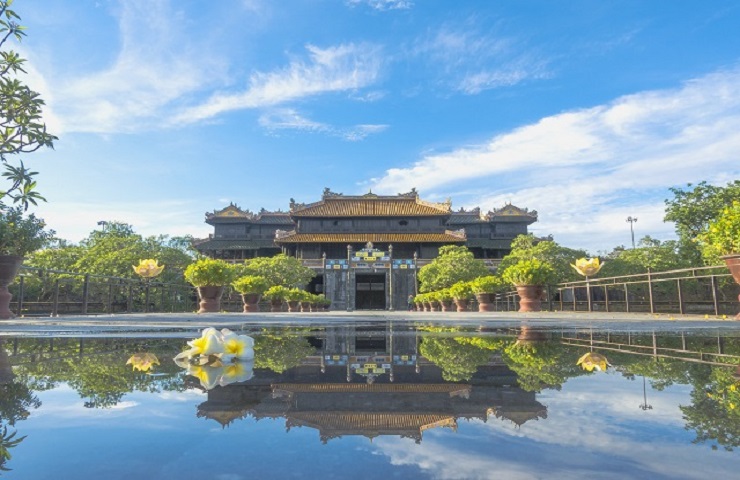
Since March 26, 1975, when Thua Thien Hue was completely liberated, the province has overcome many challenges and has risen to catch up with the national development pace. Currently, Hue has become one of Vietnam’s famous cities and is one of the country’s top three tourist destinations. It attracts visitors with its rich and longstanding history, impressive architectural landmarks, picturesque natural beauty, and the gentle and friendly nature of its people. Hue is now a place that preserves many historical relics and world-recognized scenic spots.
Hue – a Festival City for Tourism
You may already know about Hue without the need for a detailed introduction; for a long time, Hue has been an attractive tourist destination for both domestic and international travelers. Nowadays, Hue is also known as the Festival City of Vietnam.
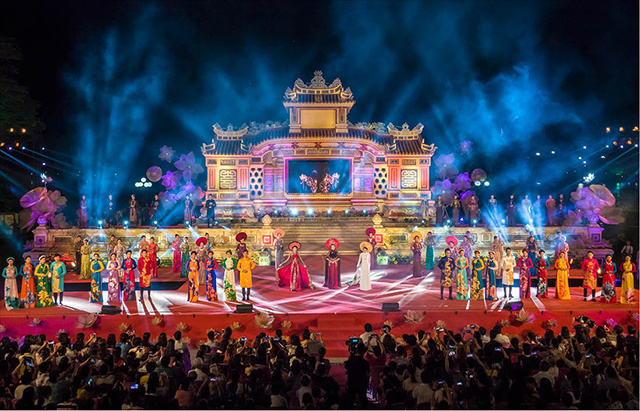
Festivals are significant cultural events with a unique character in the former imperial capital. The Hue Festival was first organized in 2000, and after achieving unexpected success, the city decided to host it every two years. As of now, the Festival has been held nine times, featuring grand-scale events and unique programs that always captivate a large number of participants. It’s from these festivities that the title of “Festival City for Tourism” has been bestowed upon Hue.
See more about detailed entrance ticket prices for Hue’s attractions: Ticket price list for 2023 to visit Hue, Vietnam
Introduction to the city of Hue regarding its natural characteristics and climate.
Introduction to the geographical location of Hue:
Hue is situated in the coastal region of Central Vietnam, including both the mainland and the territorial waters of the East Sea. It is located in the center of the country, along the North-South axis of roadways, railways, maritime routes, and air routes. It shares borders with Laos, with the East being adjacent to the sea, the Southwest bordering Quang Nam, the South bordering Da Nang, and the North bordering Quang Tri province.
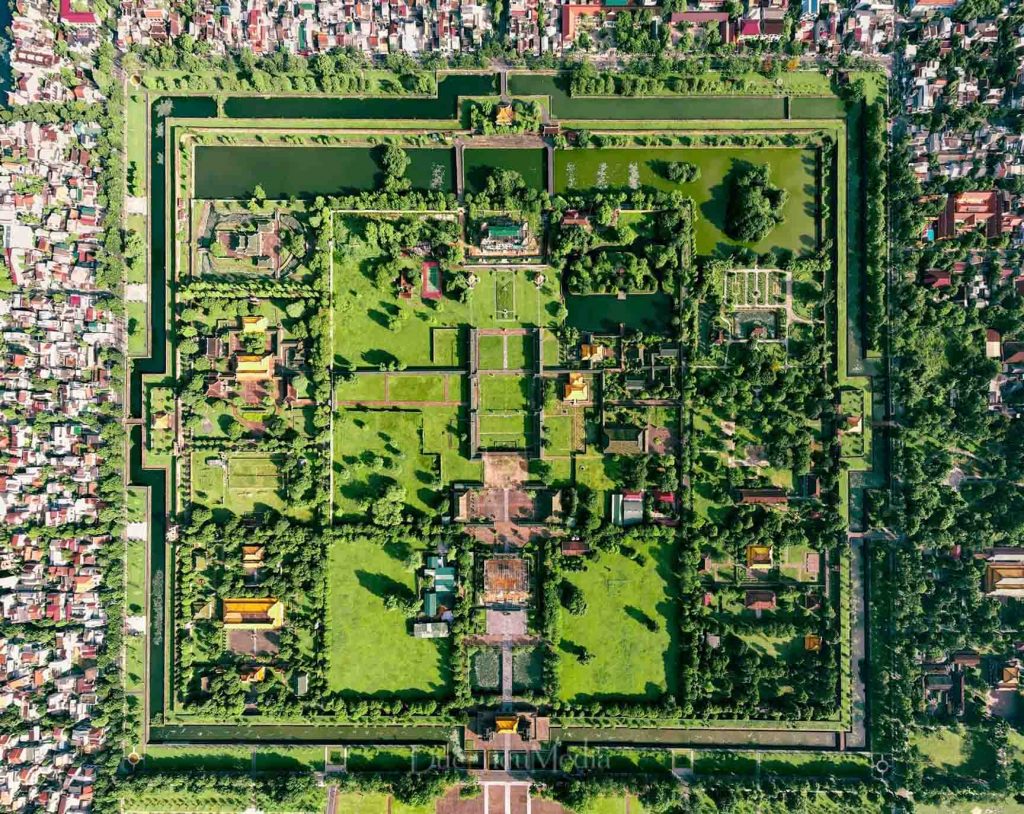
The city is located in a region with favorable natural conditions and a rich ecosystem, creating an attractive space that includes rivers, mountains, and the sea. Furthermore, it serves as a hub connecting Vietnam’s UNESCO World Cultural Heritage sites, including Phong Nha-Ke Bang Cave, Hoi An, and My Son Sanctuary.
What is the climate and weather like in Hue?
Located in the tropical monsoon zone and influenced by the transitional climate between the North and South, Hue experiences two distinct seasons: the dry season and the rainy season. The dry season begins in May and lasts until September, with average temperatures ranging from 27 to 29 degrees Celsius. During the peak months of May and June, temperatures can soar as high as 38 to 40 degrees Celsius. The cold season runs from October to March of the following year, characterized by heavy rainfall and relatively cool temperatures ranging from 20 to 22 degrees Celsius, which can be even lower.
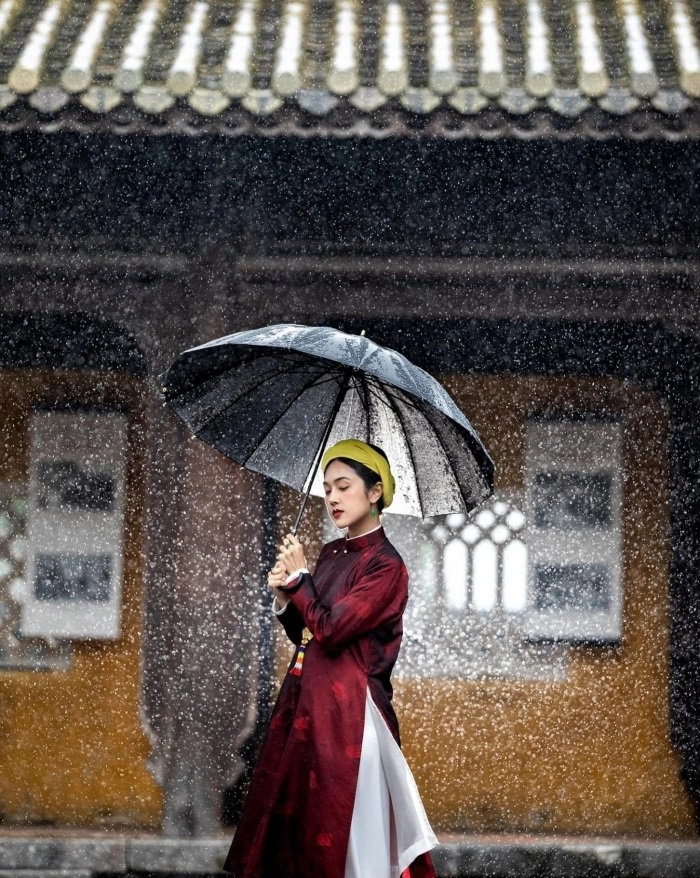
Hue has a somewhat challenging climate, but the local residents have learned to turn it into a distinctive feature to boost tourism. There are suitable options for sightseeing during the rainy season, with a network of restaurants, cafes, and hotels designed to accommodate the weather. As a result, the city seems to never stop welcoming visitors.
Introduction to the city of Hue – The beauty of its people and landscapes.
Certainly, an introduction to the city of Hue cannot go without mentioning the beauty of its people and the gentle, dreamy nature of this place. The ancient capital not only captivates with its rich cultural and historical heritage but also captivates the hearts of travelers with its human warmth and tranquil, friendly ambiance.
The beauty in the demeanor of the people of Hue.
What makes someone a “Hue person”? Hue people are known for their gentle, charming personalities, combined with a sense of warmth and discretion in their speech that captivates others. When you visit Hue, you will feel the friendliness and closeness of the people here. One peculiar thing about Hue locals is that they always have a smile on their faces when they meet others, no matter who they are or where they come from.
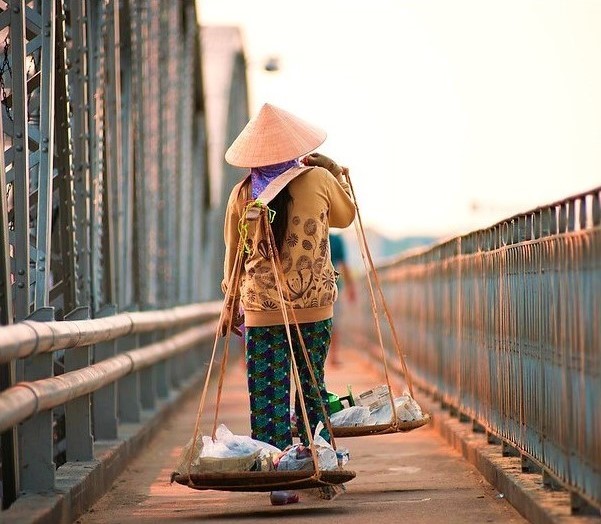
Whether you visit here just once or many times, you will feel the care, inquiries, and assistance of the local people. This simple gesture creates an inexplicable charm that attracts distant travelers.
Introduction to Hue with its gentle and dreamy beauty.
Although the weather in Hue can be quite harsh during the hot season, the Perfume River running through the city, lined with lush green trees, provides some relief. Whether you view it from a high vantage point or from Truong Tien Bridge, you will sense the serene beauty of this river.
Hue has many places to visit and countless discoveries to make. Ancient structures can occupy your entire day, and even after visiting numerous pagodas, you may not see them all. There are also many beautiful natural landscapes to explore. If you have plenty of time here, you can rent a motorbike and ride around this dreamy city, where the beauty of rivers, hills, mountains, and the sea creates a refreshing and enjoyable atmosphere.
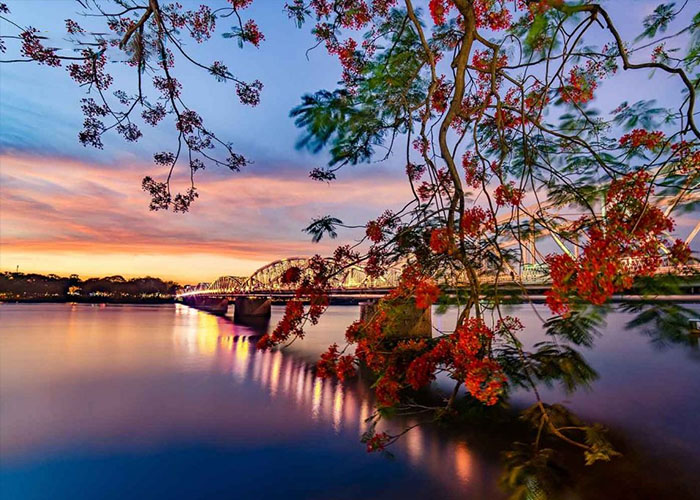
Another aspect that adds to the genuine gentleness and dreaminess of this place is that, despite being a famous city, Hue doesn’t have many high-rise buildings like other places, and it’s not overly bustling like Saigon. Hue flows through each day as calmly as the Perfume River itself. In the evening, you can experience a cyclo ride to admire the scenery or find a cozy café to sip on a hot cup of coffee while observing the daily life of the locals and the night scene in Hue, which will undoubtedly leave you with indescribable feelings.
Exploring the city of Hue using different modes of transportation:
Experience a dragon boat ride and listen to Hue singing on the Perfume River.
One of the unique modes of transportation found only in Hue is the dragon boat that sails on the Perfume River while you listen to traditional Hue songs. This is one of the ways you can admire the sublime beauty of Hue as the boat passes by various tourist attractions in the city.

Not only can you appreciate the natural beauty of Hue, but you can also enjoy the enchanting Hue songs, which represent the artistic and cultural essence of the ancient capital.
See more: Prices for the Perfume River boat tour in Hue or enjoy Hue cuisine with the tour: Hue Dinner Cruise on Perfume River (Song Huong River)
Private car with a driver
Private car rental services with drivers are a popular trend in many countries around the world. This type of tourism is designed for groups of friends or families who want to travel independently, allowing them to control their own time and have flexibility in their sightseeing itinerary. DanangPrivateCar.com’s is proud to provide private car rental services with drivers in Central Vietnam. Our professional drivers with years of experience in serving international travelers will ensure you have the safest and most comfortable journey.
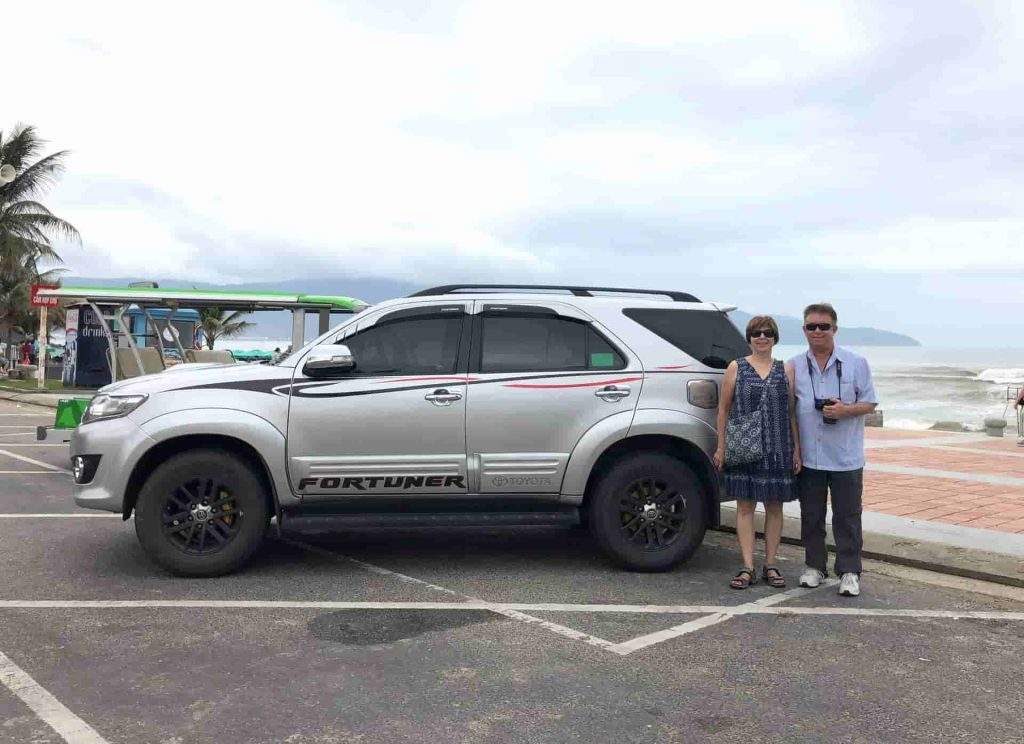
If you are looking for a self-guided tour of Hue’s attractions, rent a private car with a driver in Hue today, and our staff will help you plan your itinerary.
Motorbike rental to experience the real Hue.
Many travelers choose to rent a motorbike to explore every corner of Hue and discover new things. This is an excellent idea for those who love adventure.
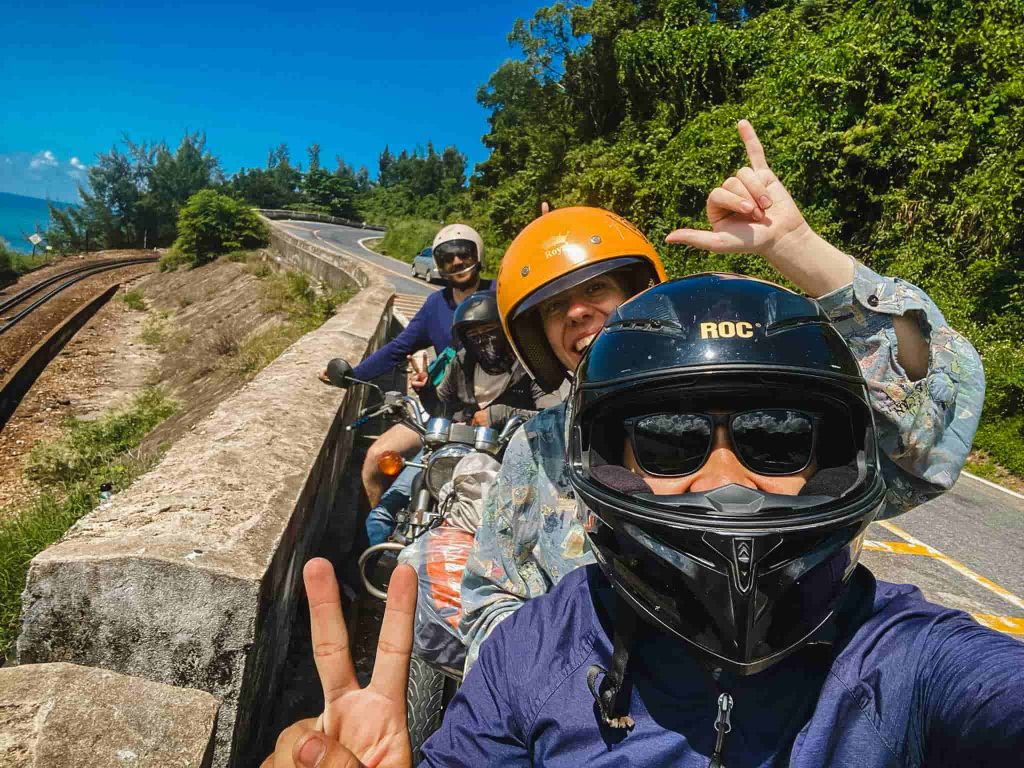
Traveling by motorbike is very convenient, allowing you to freely enjoy the scenery and check out various places without worrying about time constraints. You can contact affordable motorbike rental shops in Hue to start your exploration. Additionally, if you want to ride a motorbike but are concerned about safety or lack experience, you can book a motorbike tour with DanangMotorbikeAdventure.com’s. They are a well-known company offering motorbike tours in Hue, including famous routes like Hue to Hoi An via the Hai Van Pass by motorbike, Hue to Danang by motorbike, Hue City tour By Motorbike Tour…
Introducing the city of Hue with its famous tourist destinations.
Exploring the city of Hue through historical heritage sites.
When introducing the city of Hue, what comes to mind is a historic city with a rich and ancient history. Indeed, this is an ideal tourist destination for those who love to learn and explore the history and culture of the ancient imperial land and Vietnam as a whole. When you visit Hue, it’s as if you’ve stepped into a world of royal palaces and peaceful ancient temples.
The Imperial City (Kinh Thanh Hue)
To learn about the city of Hue, you cannot miss the Hue Imperial City, also known as Kinh Thanh Hue – the most important architectural structure closely associated with the history of the Nguyen dynasty. In the past, this was the administrative and political center, as well as the residence and activities of the Nguyen kings and the royal family.

Built over two centuries ago with unique imperial architectural styles, the Imperial City still stands intact with various structures, palaces, and citadels, such as Ngo Mon Gate, Thai Hoa Palace, Ky Dai, Duyet Thi Duong, and Bao Vinh. It is one of the UNESCO World Heritage Sites recognized since 1993. Since then, it has remained a top priority for tourists visiting Hue.
An Dinh Palace
An Dinh Palace is a distinctive architectural masterpiece where King Khai Dinh invested a great deal of effort. The palace was built on the foundation of Phu An Dinh in 1917, serving as a venue for royal receptions, celebrations, and the activities of the royal family and officials.
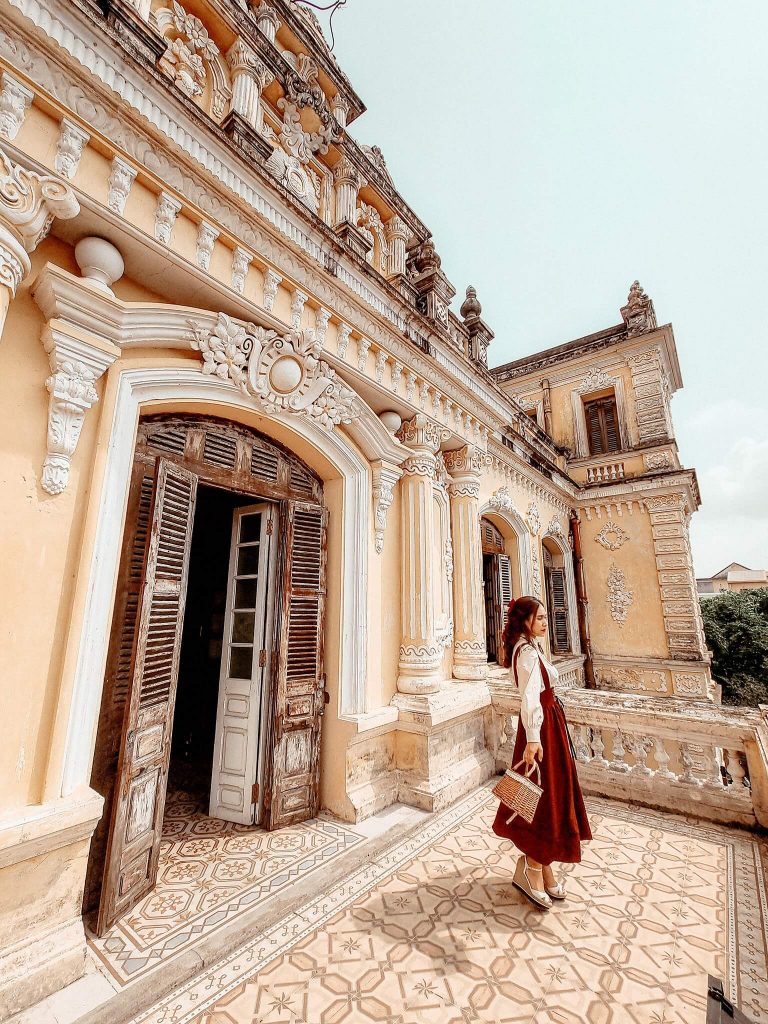
However, due to the impact of war and time, only three relatively intact structures remain: the main gate, Khai Tuong Pavilion, and Trung Lap Temple. With its historical charm, it’s easy to capture elegant and sophisticated photographs here. Additionally, it provides an opportunity to learn about the history, culture, and architecture of the Nguyen dynasty.
Khai Dinh Tomb
Located on Ninh Chua Mountain, Khai Dinh Tomb is the final resting place of the 12th king of the Nguyen dynasty. While it may be relatively modest in size compared to other tombs, it is considered a pinnacle of artistry with meticulous construction and exquisite decoration. It is known for being the longest construction period among all the tombs, lasting for 10 years.
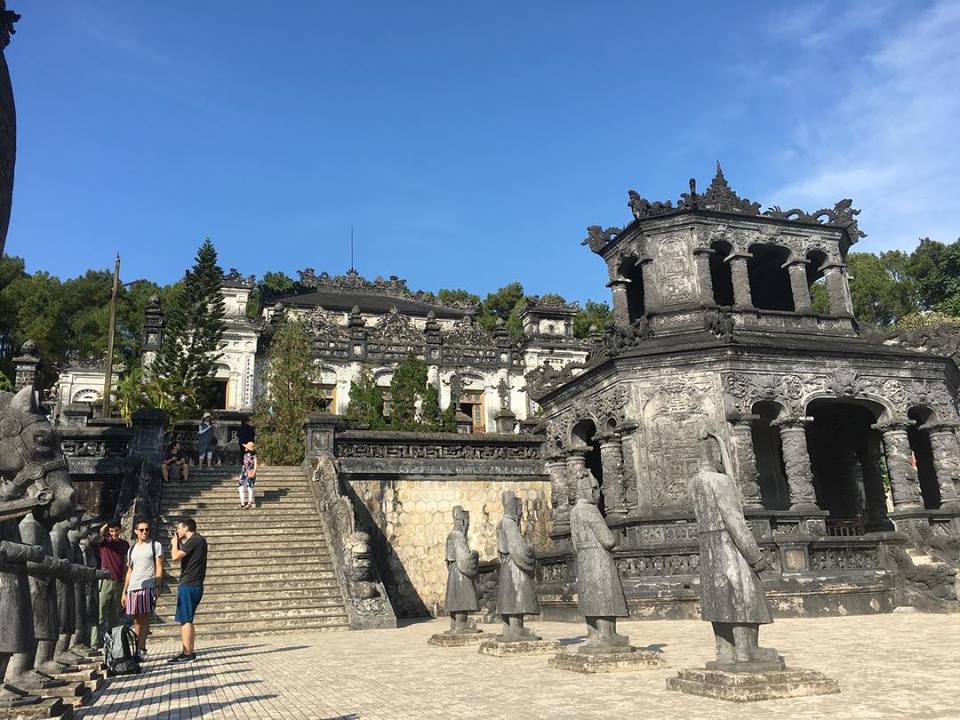
Moreover, among the Hue royal tombs, Khai Dinh Tomb is the only one that showcases an architectural fusion of both Eastern and Western cultures. This is evident in the porcelain and glass mosaic sculptures and decorations, including tea sets, commemorative items, and even a tennis racket.
Tu Duc Tomb
Parallel to Khai Dinh Tomb, Tu Duc Tomb is another destination worth exploring. Nestled in a narrow valley in Duong Xuan Thuong Village, Tu Duc Tomb, also known as Khiem Lang, is perhaps the most beautiful tomb of the Nguyen kings. It harmoniously combines the picturesque natural landscape with elaborate and expansive architectural design. When you visit, you will be immersed in the peaceful surroundings of lush greenery and a serene lake, all set against a backdrop of grandiose architecture. This creates an atmosphere that is both romantic and nostalgic.
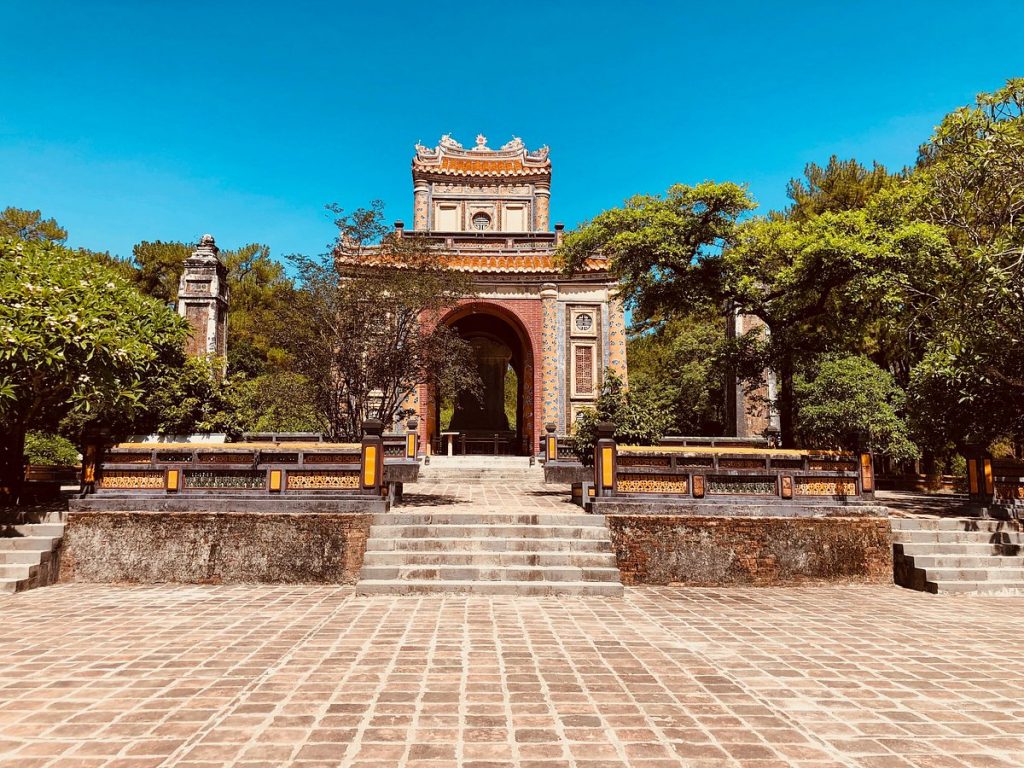
Thien Mu Pagoda
Another place that bears a deep historical imprint of Hue is Thien Mu Pagoda. It is said that visiting Hue without stopping by Thien Mu Pagoda is like not having been to Hue at all. Nestled along the Perfume River in a tranquil setting, this pagoda, despite its peacefulness, draws travelers from afar with its mysterious stories, profound ancient charm, and unique architecture.

Thien Mu Pagoda has a history of over 400 years and has witnessed the ups and downs of history. The pagoda remains a symbol of the city. Surrounded by limestone walls, here you can admire Phuoc Duyen Tower, Dai Hung Shrine, Quan Am Pavilion, and more. Notably, from the pagoda’s location, you can enjoy panoramic views of the river and the charming city.
Furthermore, the dreamy city of Hue is closely associated with the nation’s history and is famous for numerous names that have left a profound legacy in the hearts of travelers. If you have the time, you can visit Huyen Khong Son Thuong Pagoda, Tu Dam Pagoda, An Hien Garden House (built in the 19th century), and Truc Lam Bach Ma Monastery, among others.
Introduction to Hue and its notable attractions worth exploring.
Every time you introduce the city of Hue, mentioning its historical landmarks alone is not enough for you to truly appreciate the allure of this region. Therefore, to understand the dreamlike beauty of Hue, don’t forget to explore the following places:
Perfume River (Huong River)
It is absolutely correct to say that the Perfume River is a part of the “soul” of Hue. Stretching for 80 km from the Truong Son Mountain Range, meandering through beautiful forests and cutting through the heart of Hue like a gentle silk ribbon, it divides the city into two areas: the tranquil north bank with ancient relics and grand temples and the vibrant south bank with modern neighborhoods bursting with colors.
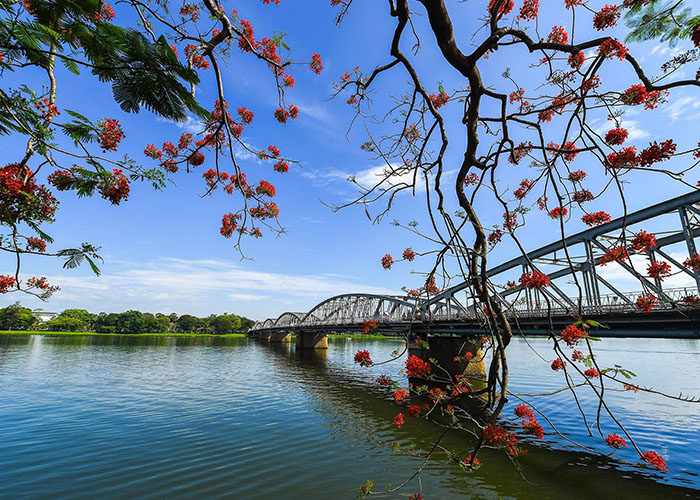
The beauty of the Perfume River has been immortalized in poetry. Taking a dragon boat cruise on the river, admiring the picturesque landscapes, or enjoying the traditional Huế folk songs will be an unforgettable experience.
Ngu Binh Mountain
Alongside the Perfume River, Ngu Binh Mountain seems like the second gift that nature has bestowed upon this land. They complement each other, with one side being poetic and the other majestic, creating a rare and harmonious natural landscape. For a long time, both have become symbols of Hue’s nature, hence the name “Huong Ngự” (Perfume River and Ngu Binh Mountain).
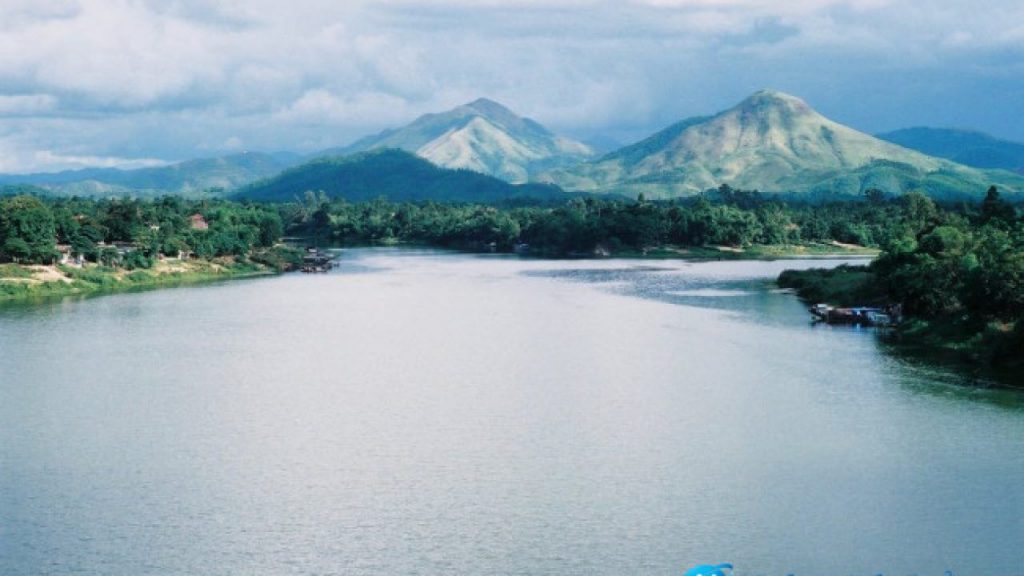
On clear days, standing atop Ngu Binh Mountain offers a panoramic view of the city. From there, you can gaze upon the regal palaces, ancient temples, and the winding Perfume River. At the foot of the mountain lies a forest of pine trees, and in the distance, the Truong Son Range and the sea.
Vong Canh Hill
Vong Canh Hill is located about 7 km from Hue City, and although it may not be very prominent, its position allows you to have a sweeping view of many ancient relics and vast natural landscapes. Particularly, visiting during the afternoon or at sunrise provides a romantic and warm scene that will captivate your senses. Additionally, you can organize outdoor activities, camping, group gatherings, or even wedding photoshoots here.
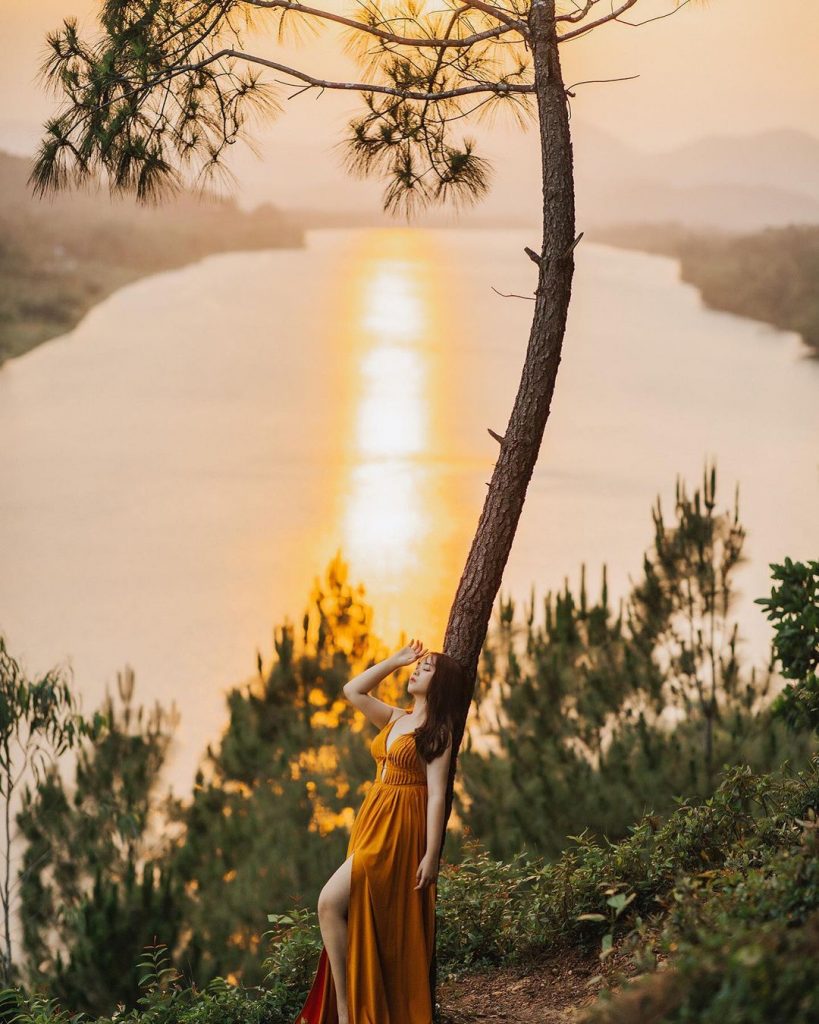
Truong Tien Bridge
Introducing Hue without mentioning Truong Tien Bridge would be a major oversight. This bridge spanning the Perfume River with its gracefully curved arches has become one of the distinctive symbols of Hue.
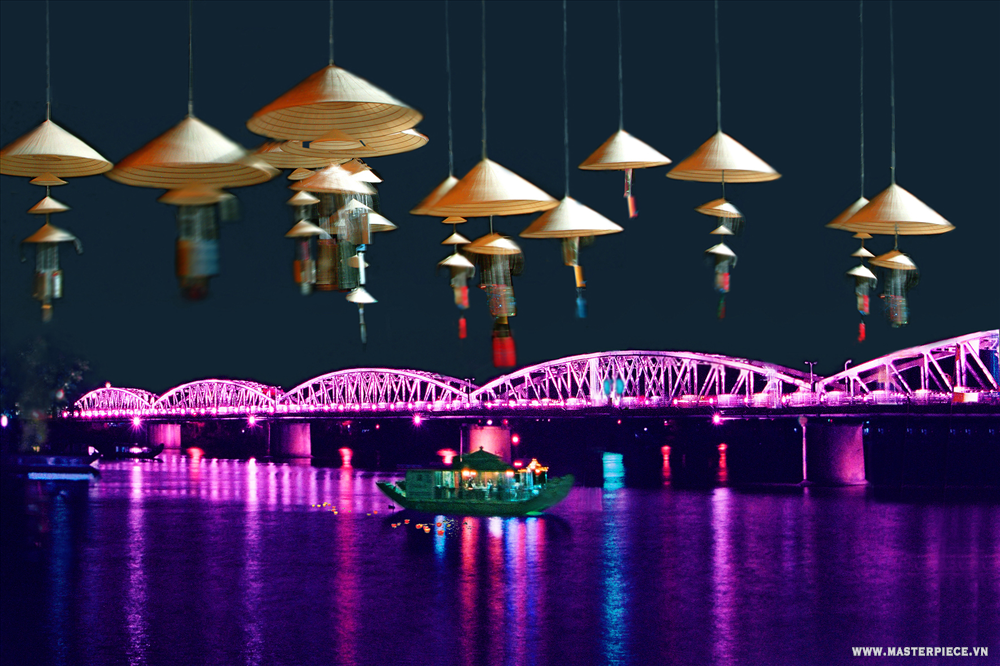
If Hanoi has Long Bien Bridge as a historical witness, Hue has Truong Tien Bridge—a witness to the historical events and dignified history of the country for over 100 years. Today, it is considered one of the attractive tourist spots that every visitor to Hue should not forget to visit. The image of the bridge reflecting on the river’s surface in the golden sunlight of summer, strolling on the bridge where you can witness daily life, and hear familiar sounds will help you better understand the life and people here.
Lang Co Beach
With rivers and hills, there must be a beach. Lang Co Beach in Hue contains nearly everything that nature has bestowed. Stretching along the most beautiful curve of the country’s coastline, Lang Co possesses the beauty of lush mountains, fine white sand, and crystal-clear sea, resembling a piece of glistening crystal. Not only does the bay have stunning scenery, but it also hosts a diverse ecosystem. This is why anyone who comes here will be amazed and overwhelmed by the masterpiece that nature has given.
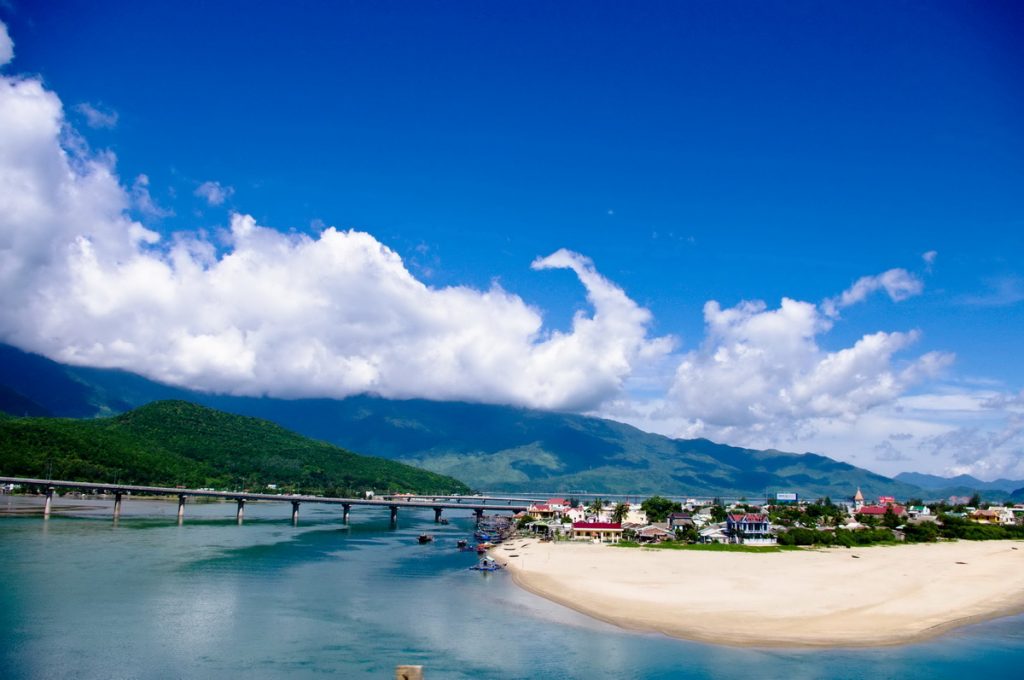
Hue also boasts attractions like Tam Giang Lagoon, Bach Ma Mountain, Lap An Lagoon, Thien An Hill, Thuan An Beach, the famous Dong Ba Market, and more. Even if you visit Hue once or twice, it’s challenging to explore them all. They all offer beauty and charm, promising to evoke various emotions within you.
If you are in Da Nang City and looking for a day trip to visit the famous tourist attractions in Hue, then book our day trip from Da Nang to Hue – Hue City Tour from Danang to experience it.
Introduction to Hue City through its exceptional cuisine.
It can be said that Hue is truly a dreamy place that knows how to evoke nostalgia and longing in people. This place is not only beautiful in terms of its people and landscapes but also has a distinct culinary culture with unique flavors. When you visit Hue, you can savor a variety of dishes, from humble and rustic street food to elaborate royal cuisine and vegetarian dishes.
Hue Royal Cuisine
Unlike many other places, Hue has a culinary tradition that is reserved for the royal class due to its rich history and being the residence of the Nguyen dynasty. This is known as Hue Royal Cuisine.

Royal cuisine represents the most exquisite and noble dishes served to kings on a daily basis or during grand palace banquets to entertain distinguished guests. These dishes are characterized by their meticulous preparation. Furthermore, the presentation and decoration of these dishes are equally exquisite, creating a unique and unmatched aesthetic. Examples of these dishes include nem cống (a type of spring roll), chả phượng (a type of meat pie), da tây nưu (jellied meat), bird’s nest soup, and elephant foot meat.
Hue Folk Cuisine
In contrast to royal cuisine, Hue’s traditional folk dishes are made from common ingredients found in daily life. The preparation methods are simple, unlike the sophisticated techniques used for noble dishes. The simplicity and rustic nature of these dishes, however, leave a lasting impression on those who savor them.
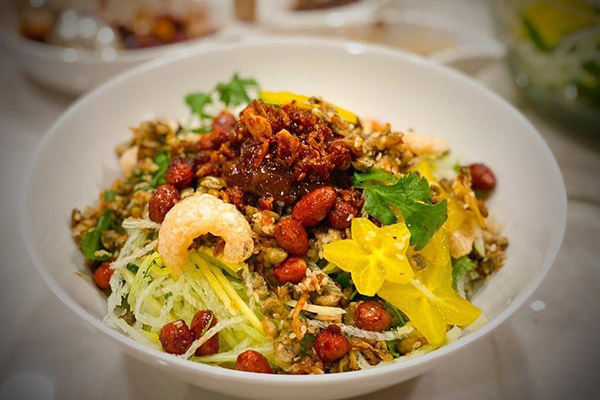
One notable dish is “bún hến” (clam rice vermicelli), a bowl of which combines 16 different flavors: rice, clams, toasted peanuts, garlic, salt, chili sauce, monosodium glutamate, banana flowers, etc. Despite this seemingly chaotic combination, it is incredibly delicious, and what’s more, it is very affordable. You can find “bún hến” in other provinces, but none can compare to the unique taste of Hue.
Hue Vegetarian Cuisine
As the birthplace of Buddhism, Hue’s ancient rulers, including the Nguyen emperors, held Buddhism in high regard. Consequently, not only did the monks follow a vegetarian diet, but also the nobility. Vegetarian cuisine is prepared from fresh plant-based ingredients, such as soy products, tofu, and a variety of vegetables. Animal products are strictly avoided.

Despite the simplicity of the ingredients, Hue’s vegetarian cuisine is renowned for its creativity and finesse. Talented chefs transform these basic ingredients into elegant and appealing dishes such as “bánh cuốn” (steamed rice rolls), “bánh thịt chua” (sour meat cakes), “bánh lọc” (tapioca dumplings), “cơm chay” (vegetarian rice), and “rau củ quả xào” (stir-fried vegetables).
Today, vegetarian dishes have become a specialty of the people of Hue. With their intricate preparation and delicate presentation, these dishes have become a preferred choice for both locals and tourists. Moreover, many Buddhist families in Hue and across the country observe vegetarian diets for at least two days every month (on the 1st and 15th days of the lunar calendar) as a way to diversify their palate.
Some Famous Dishes in Hue
With its diverse culinary offerings, Hue has numerous dishes for you to savor. If you have the opportunity to visit Hue, we recommend trying these famous dishes:
- “Bún bò Huế (Hue Beef Noolde)” – the soul of Hue’s cuisine.
- “Cơm hến” and dishes made from clams.
- Various types of Hue’s cakes (such as “bánh bèo,” “ram ít,” “nậm,” and “lọc”).
- Simple and flavorful “cơm chay” (vegetarian rice).
- Assorted “chè” desserts from Hue’s culinary tradition.
- “Bánh canh Nam Phổ” – a hearty noodle dish.
- “Bún thịt nướng” – grilled meat vermicelli.
Introduction to Hue City and Some Travel Tips.
After hearing the introductions about Hue City, many people will find it hard to resist the allure of this ancient capital, and that includes you. But how can you explore all the historical traces and fully experience the dreamy beauty of Hue? The following tips will help make your trip perfect.
When Is the Best Time to Visit Hue – Which Season Should You Choose for Your Trip?
As mentioned in the general introduction to Hue City above, you may already know when to visit Hue. If we talk about the best time, it’s probably during the autumn season (July, August, September). During these months, the weather is cool and pleasant, not too hot, making it convenient for sightseeing and visiting famous landmarks. With this weather, you are sure to have an exciting trip with many memorable experiences.
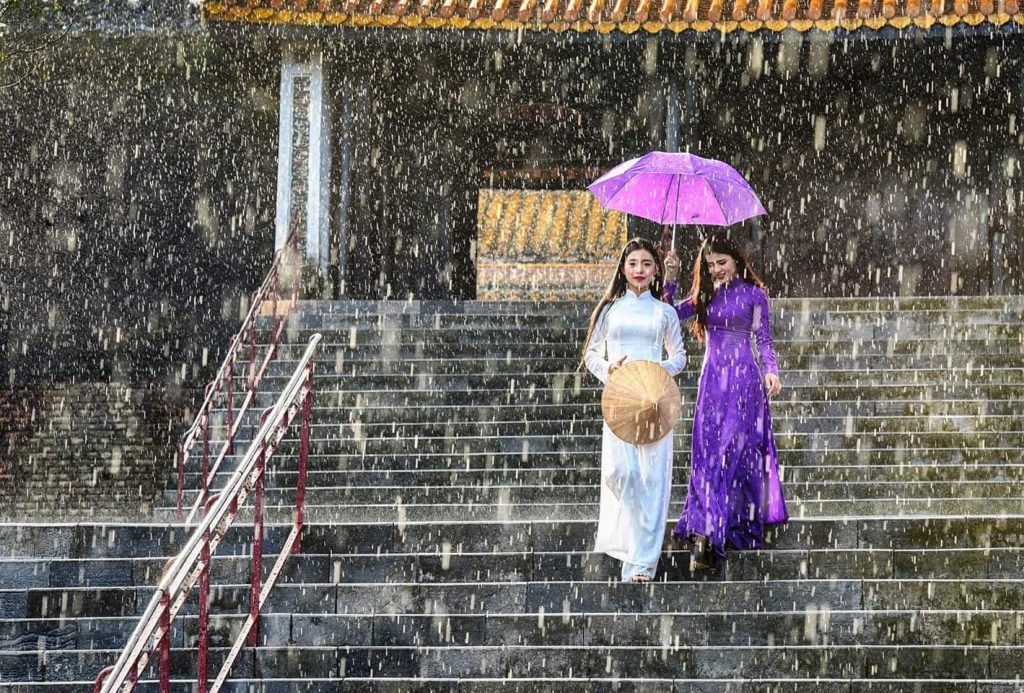
You can also visit during the summer months. Apart from the scorching sun during midday and early afternoon, the weather is generally dry and suitable for travel. According to travel experience in Hue, you can visit during the Festival season to experience the dreamy beauty of Hue and immerse yourself in the unique culture and traditional festivals here. If you simply want to enjoy the scenery, you can visit at any time of the year, but it’s best to avoid the winter months because it can be very cold and rainy.
View more articles about: Hue weather – when is the ideal time to discover the beauty of “poetic land.
What Should You Prepare for a Trip to Hue City?
What do you need to prepare for a trip to Hue? First, you need to thoroughly check the weather forecast, and then make a specific plan for your trip: what mode of transportation to take, how many days to spend, what to bring, etc. Thorough preparation is never excessive for any journey.

Therefore, don’t forget to bring your personal identification documents, cash, and ATM cards, as well as essential personal items. Remember to bring a modest set of clothes for visiting historical sites, temples, and shrines. Also, bring swimwear if you plan to swim in the sea, some versatile or stylish outfits for “photo ops,” a hat, shoes, and accessories. And of course, don’t forget sunglasses, sunscreen, cold and pain relief medication, and your phone/camera.
Hue is truly special and worth visiting at least once in a lifetime.
Although it may not be as bustling and lively as Hanoi or Ho Chi Minh City, Hue is gradually emerging as a famous tourist city for travelers from afar. Regardless of the time of year you visit, you can still feel the unique historical and cultural essence of this land. Hue is tranquil, peaceful, unhurried, yet it easily captures one’s heart.
DanangPrivateCar.com’s is confident that after reading this introduction to Hue City, you will develop an even greater fondness and love for the ancient capital of Vietnam. Come to Hue once to experience and discover the things that are both familiar and new!


Comments